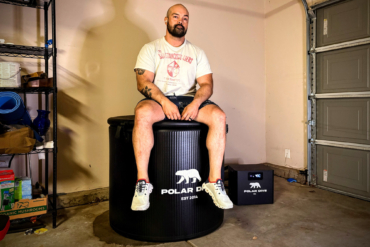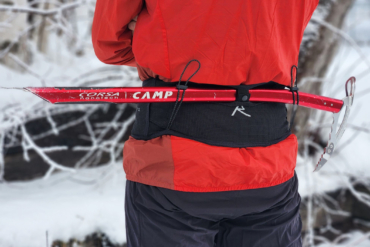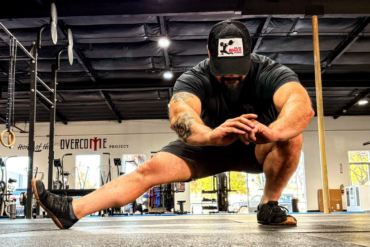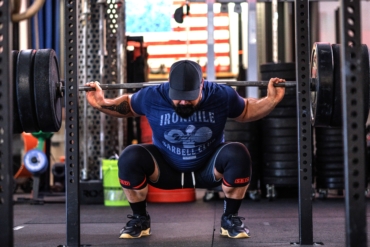Races last for days, and you are always on the clock. So, when gear costs you time — like a loose gaiter that keeps sliding down, a stuck zipper, or a broken backpack buckle — it really makes an impact. It can even cost you the race.
This year, we managed to pair the right gear with a solid team dynamic, which helped us win North America’s biggest prize purse in the Ozark Expedition Race.
Our team, Team BendRacing/SkinDoctor is known for bringing the lightest, newest gear. And we’re extremely tough on it because nothing except function matters when we’re in race mode. We take it scrambling against abrasive rock outcrops, crossing wild rivers, and charging right through dense, fabric-ripping forests without a second thought. This course tested us, and our gear, to the limit for 85 hours across its 400 miles.
Below is a list of some of the newest and best gear that was used on our way to the top of the podium.
USWE Packs
Hajker Ultra 30L Pack

The Hajker Ultra ($190) has changed our race game. USWE designed the Hajker with adventure racing, fastpacking, and mountain running in mind, allowing it to carry up to 8 kg. It’s safe to say that we exceeded the weight limit on some stages, and it held up.
The shining feature of the pack is its vest-like fit. It doesn’t bounce on the shoulders or on the hips at all thanks to USWE’s bounce-free “No Dancing Monkey” harness system, which is the most comfortable system of any pack we have ever used. This pack was designed in tandem with USWE’s adventure racing team in Sweden, and it shows.
The removable front pockets (not included, but worth it!) held our tracker and extra snacks, while the double mesh side pockets were perfect for water bottles and trekking poles. The zip pocket on the bottom or the pack is our favorite feature, as it’s easy to get to when wearing the pack and is perfect for a headlamp. There are ample pockets for things like sunscreen, first aid, and maps that are easily accessible.
Our team members used this pack from start to finish on both the trekking and biking stages. Unlike other fast packs that are only comfortable on treks but not as good on the bike, this pack was extremely comfortable and efficient for both. The only caveat right now there is only one size, and while the adjustability allows for a wide fit range, it may not work as well for the really small or really big folks.
The Pace 14L

As adventure racers, we need everything to be at our fingertips while we are running, trekking, and biking. The Pace 14L ($150) does just this and more. This pack was worn on shorter legs, countless training hours, and by myself and Karine Corbeil. We were amazed at both the comfort and how much it could hold. Throughout much of the race, we forgot that we even had it on, even though it was stuffed full with food, water, and mandatory gear for a 10-plus-hour leg.
My teammate looked over at me at one point and said, “It feels like I am wearing a cloud!” That “lightness” was thanks to both its “no dancing” harness system and its elastic side panels that let our chest expand during physical exertion. It’s packed with features for maximum accessibility, and it comes with two soft bottles and room for a bladder.
Leki Poles

The Ozarks are known for unrelenting, leg-shattering terrain. A flat section was very rare on this course and so we knew we’d need to have at least two sets of poles on our team. We chose to go with the Neo Trails because of their lightness and durability. It is a fixed size nonadjustable pole, so make sure you buy the right size.
The Neo Trail Poles ($200) have a very comfortable handle and wrist strap, which is key for long 12-24-hour treks where you need your hands to stay healthy and not get blisters. The poles themselves are stiff and helped keep our knees and ankles stable and strong when we were off trail. When we did run on easier terrain, they were quick to break down and store in the outer mesh of a pack. (LEKI also makes similar adjustable-length poles, which are great for sharing among a team or with your partner, and allow you to customize height.)
Fenix Lights

Being able to go fast and be confident in the dark is huge for adventure racers. Our lights need to be 100% waterproof, durable, easy to use, and lightweight. Our Fenix lights check all of these boxes with flying colors. Fenix has so many great lights, but our team favorites are the Fenix HM61R and the BC26r.
For discounts on Fenix lights, click the link and enter the discount code “BendRacing” for a discount at checkout.
Fenix HM61R
The Fenix HM61R V2.0 headlamp ($90) is extremely bright, waterproof, and long-lasting with a max of 1,600 on turbo mode and a run time of 300 hours on Eco mode. With an 85-hour finish time, our team only had to change batteries once, and we were mostly running with it on the second or third setting for 10-11 hours a day. The light is also glove-friendly, which is a must for colder expeditions.
The HM61R V2.0 also has an updated double-tap switch that lets you access the three red light modes independently of the white light modes. The red light is great for map reading, so to be able to switch the light to red without cycling through white was a game changer. (The light uses 18650 batteries, which can be recharged while in the unit via a magnetic charger or swapped out for a spare.)

Fenix BC26R
Much like Fenix’s other lights, the BC26R Rechargeable Bike light ($90) is durable, waterproof, and has a long battery life of 65 hours on the lowest setting. In adventure racing, biking can be wild and rough, so having a bright light with a wide (100 degrees) floodlight beam helps us feel confident when going down gnarly terrain. The light comes with a quick-release bike mount, which made taking it off (when we didn’t need it) super fast and easy.
In 4 days of racing with much of our bike sections being through the night, our entire team didn’t need to replace their battery. We did make sure to avoid using the brightest setting except when we needed it, but this was easy to do with the one-click controls. The unit includes tool-free mounting which makes it hassle-free. Our recommendation is to get the BC05r V2 Rechargeable bike taillight as well. It only costs 20 bucks, but is super important to have when biking at night.
MRS Barracuda R2 Pro Packraft
Thanks to our team (and GearJunkie founder Stephen Regenold), packrafting is now a staple sport in every expedition race. Packrafts are an amazing tool for adventure race directors because it opens up so much more course to racers. Racers equally love it because they don’t have to worry about different boats in every race.

For adventure racing, we need to have fast, durable, and light boats that can fit two people and all their gear. Enter the MRS Barracuda R2 Pro ($1,899), “The Ultimate Adventure Race Packraft.”
It comes as either a self-bailer boat, or with a removable spray deck and spray skirts. Either option works depending on your team and their skill sets. We opted for the removable spray deck and spray skirts, and we couldn’t be happier. The skirts have neoprene edges that are easy to take on and off (extremely important when racing) and that don’t let any water in. We went down multiple big water Class III and ended up with less than a gallon of water in our boat.
The handles are placed well, and make carrying it very comfortable. The T-zip, while a little on the smaller side, fit all of our dry bags nicely inside the boat. This helped keep our cockpits clean and less clogged up with our stuff. And seats blow up, making it a very comfortable seating arrangement, especially for the long-haul paddle legs.
In a side-by-side test with the Alpacka Gnus (also a great boat!), the Barracuda was over 2 minutes faster.

Skin Doctor
Let’s face it, blisters, flappers, and chafing suck when you are on a long trip. We know this all too well, as do most adventure racers. But, does it have to be this way? Well, there’s a reason why this year our name is “Team BendRacing/SkinDoctor.” Since we started using Angelina’s Organic Skincare’s Skin Doctor, we have not experienced any blisters on our hands or feet.
From setting a new record in the Yukon 1000 race to Expedition Races around the world, our team has yet to get any skin problems or blisters since we started using Skin Doctor before, during, and after our events. It is handmade in Bend, Ore., with all-organic ingredients.
Water and Fuel
HydraPak 42 MM Filter Cap
Staying hydrated while adventure racing is crucial, especially when it is a multiday race like Expedition Ozark. Luckily, there was a lot of access to rivers and streams where we could fill up our Flux HydraPak bottles and then use the new filter ($35).
In the past, we would have needed to wait 30 minutes before we could drink it safely. With these new fast filters, worrying about water treatment is a nonissue. The HydraPak filter has a super-fast flow. According to HydraPak, it can filter “approximately 1500 of fresh water at a rate of more than 1 liter per minute.”
Other reasons we like it? The sturdy flip cap can be done with one hand. We also love that it fits on many different bottles including their running flasks, Seeker containers, and the Flux bottles.
For discounts on Fenix lights, click the link and enter the discount code “Chelsey” for a discount at checkout.
Spring Energy

For those of us who are sick of the super-sugary gels and are ready for real food, Spring Energy ($4) is a great and delicious option. Unlike other race food, Spring is made from 100% real foods. An example of their ingredients list includes coconut oil, basmati rice, dates, apples, salt, etc.
The ratio of fat and carbs leads to a perfect high-calorie snack that feels good on the body instantly and long term. I have yet to get any sort of stomachache or mouth sores from Spring and after 3 years of racing with it, I still am excited to eat it, which is a huge win!
What sets Spring apart from other gels is that each gel is actually different, with a different purpose. (Most companies only vary the flavor and caffeine content.) Grab the “Power Rush” when you need an extra burst close to the finish line. Long hill grinding you down? The “Hill-aid” gel will get you up. Hours to go? Maybe it is best to reach for the sustaining slow burn of the peanut butter-inspired “Long Haul.” And my favorite? I love the whopping 250 calories and 50 mg of caffeine of the “Speednut”!
4-Hour Fuel
We are firm believers in simple choices and liquid fueling, and this race was no exception. For much of the race, our team used 4-Hour Fuel ($10) as our primary calorie source. It is light, tastes great, and has everything nutrition-wise that our bodies need. It is made up of carbs, protein, electrolytes, and BCAAS and flavored exclusively with 100% fruit powder. And 800 calories fits into a standard bike squeeze bottle, which is about 4 hours of fuel for an average person.
The product is still in the scaling-up factor (our teammate Daniel is the head of product development), so it’s likely limited until later in the year when more production capability comes online.
Rain Skirt

The myth of “waterproof/breathable” is never more evident than when trying to exercise at even a moderate output … in shell pants. Yeah — we know — it can be hard to shift the paradigm of thinking about waterproof layers, but in our opinion, waterproof pants are less than ideal for many use cases outdoors. With rain pants, they often get so soaked that they stick to our legs. And when this happens, they are harder to take off. Enter the rain skirt!
The rain skirt is perhaps one of our most used pieces of gear ever. We use this skirt instead of our rain pants, as it works way better than any pants and is at least 50% lighter than pants. The wraparound skirt design keeps you dry in the important areas (hips, seat, thighs) while providing some airflow at the same time.
With the skirt, it is almost instant to take on and off and works amazing for biking, trekking, and even paddling. It also acts as a great privacy towel for changing when you get back to the car, or even during the race. At transition areas, we often have to change in front of lots of people (but you can’t be naked). Having the skirt to wrap around us saves us a few minutes in every transition!
Shoes
Scarpa Spin Infinity

It’s really hard to find the “perfect” adventure racing shoe, because we race on many different kinds of terrain. Intense bushwhacking, side-hilling, steep mountains, and of course, gravel roads and trails are all part of an average race. The Scarpa Spin Infinity ($120) is the closest I have found to the best all-around adventure race shoe.
I used these for two of the big treks at Expedition Ozark, and my feet never once complained. They edged into the sides of the hills when traversing, didn’t smash my toes when running down steep trails, had really great grip in the slippery river beds and provided amazing ankle support for miles and miles. All of this is thanks to the Foot Stabilizer control system and a great EVA midsole. I loved both the lightness and the sturdiness of this shoe.
Hoka Speedgoat 5

Toward the end of the race, when our feet were swollen and needed extra padding, the Speedgoat 5s ($150) saved the day. For our last two treks, we all opted for our bigger, more comfy shoes. The Speedgoats were able to perform both on and off the trail thanks to Vibram Megagrip soles that kept me from slipping on the loose soil in the bush. The top mesh was surprisingly durable and didn’t let any dirt in, even after trekking through a ton of brambles and other thorny bushes.
From the feet up — shoes, packs, packrafts, and more — this is the gear that carried us through our most recent race. We highly recommend it, especially if your next adventure involves logging as many multisport miles as we did.








